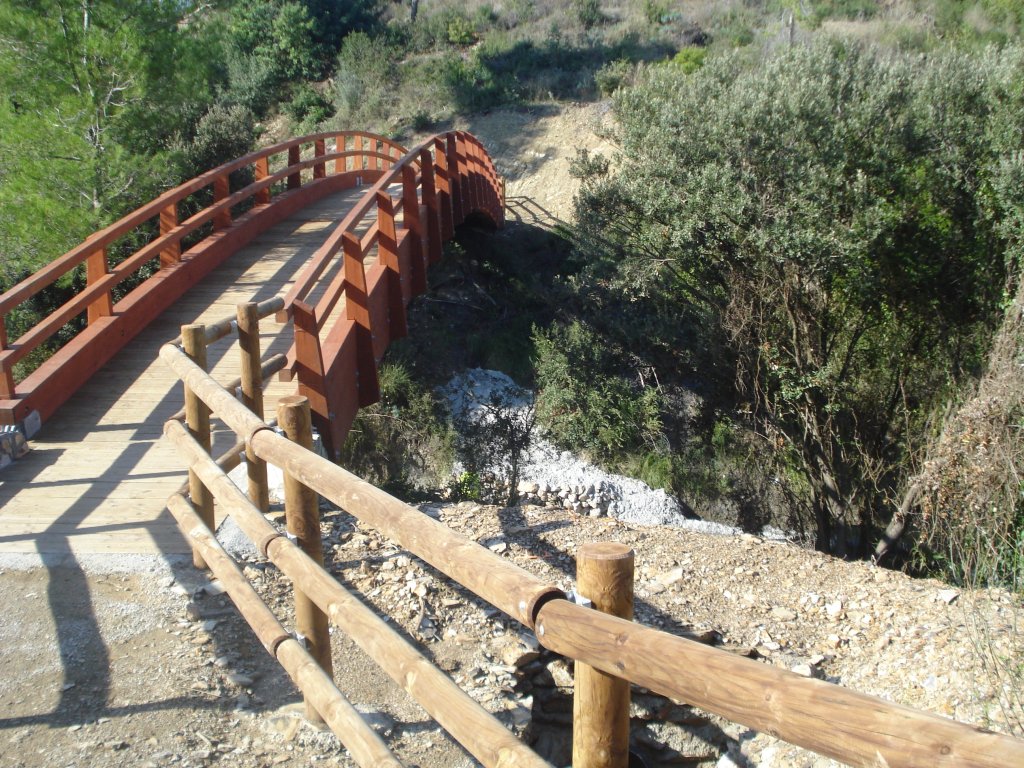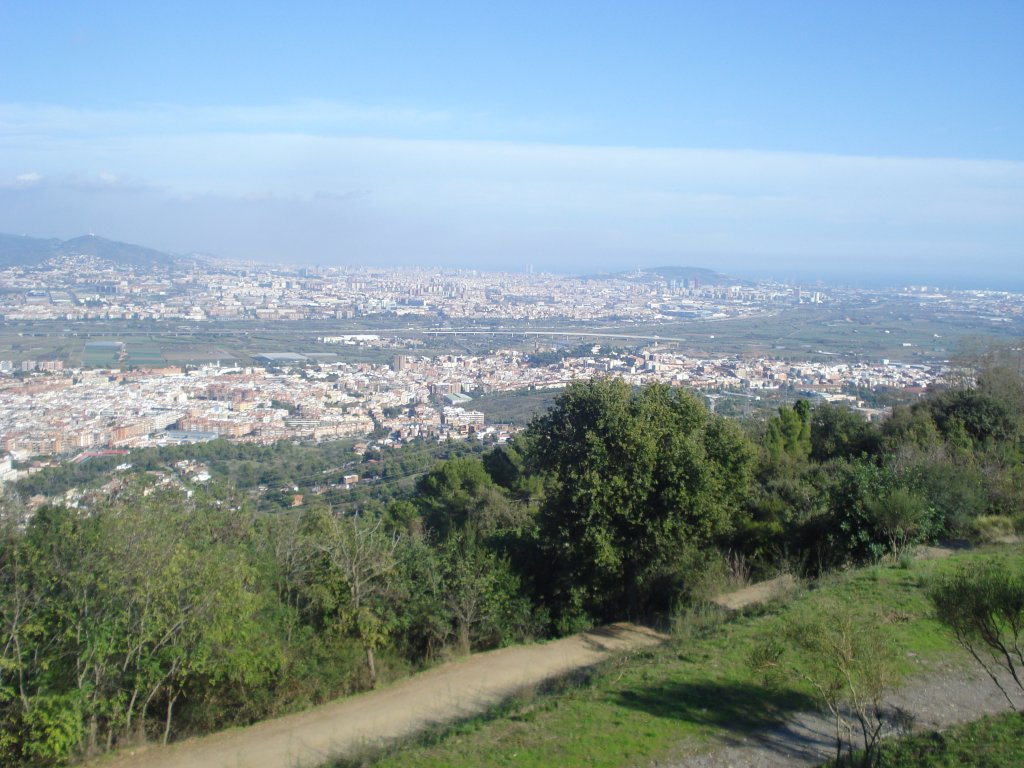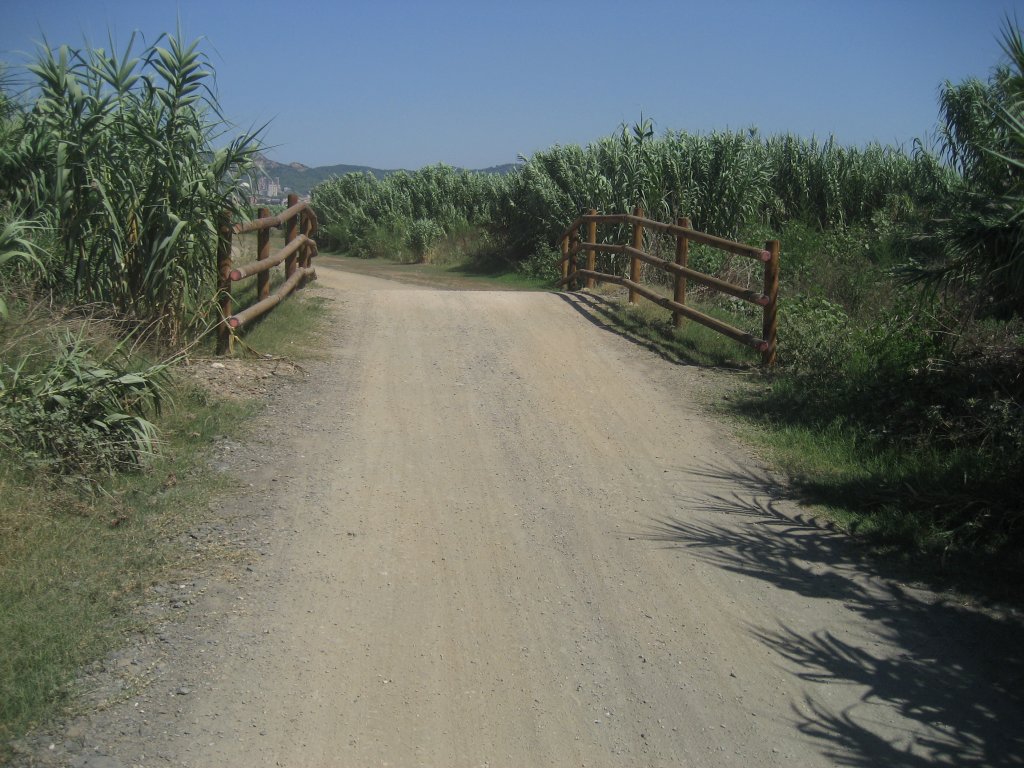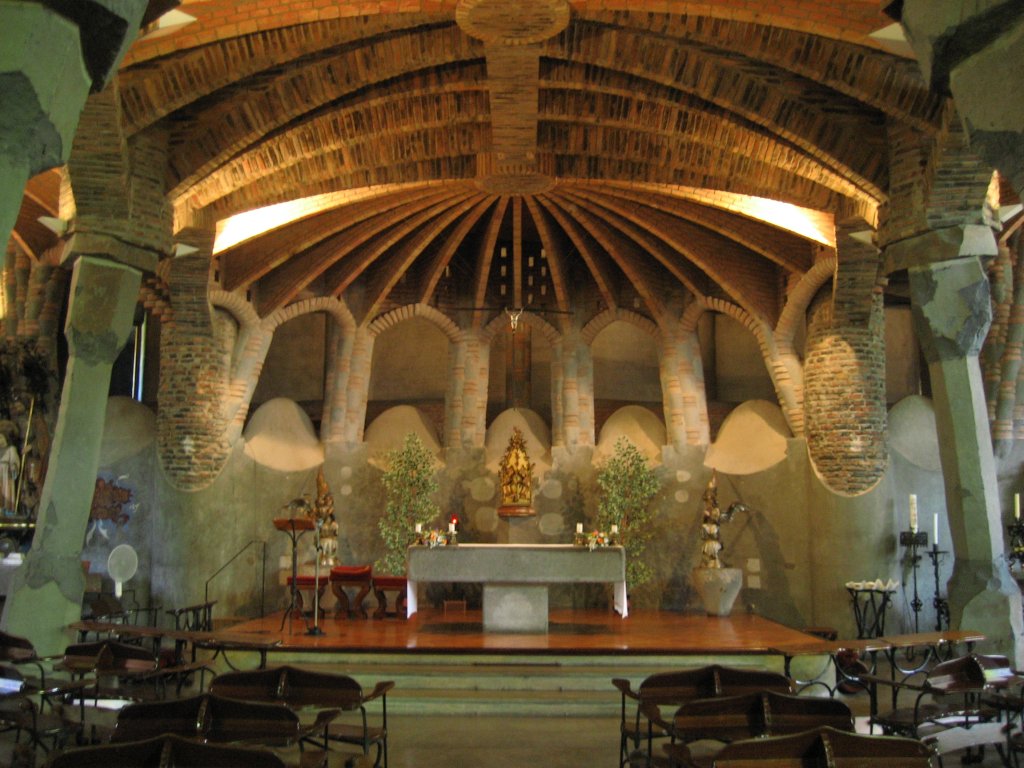Anell Verd Nature Trail
Description

From the fertile lowland of the River Llobregat to the suburban hills of Sant Boi
L’Anell Verd Nature Trail is semi-circular and covers different environments, ranging from the bank of the River Llobregat to mid-mountain spots, including the town and suburban areas. The route passes close to important architectural elements, such as the Güell Crypt and the Chapel of San Ramón, as well as crossing well-preserved Mediterranean forest areas.
The Trail begins on the banks of the River Llobregat, to the northeast of the municipality of Sant Boi de Llobregat. The surface is made of dirt and flanked by a fence that protects the crops and by a barrier of reeds (Arundo donax) through which you can spot the river. The path is flat and easy to follow.
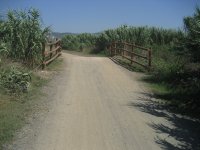
You walk along a section with little vegetation until you enter an area of vegetable gardens and their wire netting fences on one side of the route that protect the course of the Riera de Can Soler.
The Trail reaches a farm road (B-202) and runs alongside it, protected by a wooden rail that will accompany it most of the way and which will be your best guide to prevent you from getting lost. On the left-hand side, you can see the old textile factory of the businessman Eusebio Güell, who was one of Gaudí’s patrons.
The Nature Trail takes a 90º turn, crossing over the road via a pedestrian crossing and entering the neighbourhood where factory workers used to live. Many of the buildings in the neighbourhood are the work of this brilliant architect. In fact, the Trail passes close by Güell Crypt. It is worthwhile stopping to admire this work before continuing on your way through the streets of the neighbourhood.
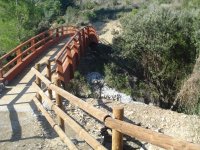
You leave this populated area alongside the Camí de Can Ros, which is tarmacked, but which soon turns into cement. You will welcome the freshness of the fig trees (Ficus carica), while you pass nearby the houses of the Masía de Llorc, where there is a lovely view of the Colonia Güell.
You continue up the path until you reach a tarmacked crossroads in an urban area. The Trail changes direction by turning sharply to the left, passing the Mas Terra Alta country house on the right, and beginning a steep descent down the path.
Your descent ends when you reach a stream, which is often dry, but can be recognized by the change in vegetation, which is much more luxuriant. There you climb up again, among gall-oak (Quercus faginea) and pine (Pinus sp.)trees, until you reach a path and the inseparably company of the wooden railing.
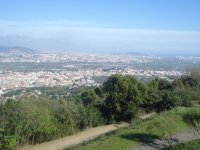
Passing under a chain that restricts the access of motor vehicles, you will reach the Camí Vell de Torrellas. On taking this path, you will pass the Santa Bárbara estate on the right and continue descending until you come to another chain that restricts the access of motor vehicles. On crossing it, your journey continues among the hills surrounding Sant Boi, covered with pine trees and traditional country houses.
Where the path widens, a recreational area has been prepared which is known as the educational area of Can Palós, next to the eponymous Casa de Colonia. It is outfitted with a fountain, tables and benches, where you can rest and have a refreshment. You have to get back your strength as more ascents await you. By continuing along the route, after several more ascents and descents, you will arrive at an area with splendid views of the valley of the River Llobregat and the surrounding villages.
Further on, a wooden walkway enables you to surmount the difference in level over the road that links Sant Boi to Sant Climent. Just at the end of the walkway, the last and steepest ascent begins, but it is well worth the effort. Several rewards await you at the top. On the one hand, magnificent views, and, on the other, the impressive Chapel of San Ramón. You will finally be met by a recreational area where you can recover from any feelings of tiredness.
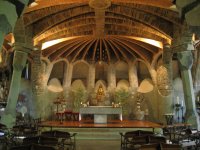
Given its altitude, from the chapel you can see the sea, the Delta of the River Llobregat, Barcelona airport and numerous buildings in the metropolitan area of Barcelona. From here onwards, the Trail is all downhill as far as Sant Boi. Just as you leave the chapel, you will come to its car park on the right. Then you can continue downwards along the dirt track until you reach the Parc de la Montanyeta.
When you get to kilometre 14, the Font de Golbes fork begins, passing by the fountain that lends it its name and a resting area.
The Trail runs alongside a stable that has been renovated for sheep, which is municipal property, and whose main purpose is for these sheep to reduce the amount of undergrowth and minimize the fire risk.
Now, close to the end of the fork, the path runs along the same dirt track passing next to a hunting pavilion, the Tower of Benviure, a little before reaching a resting area next to a car park, restored by the town council of Sant Boi, which is where this fork ends.
Profile
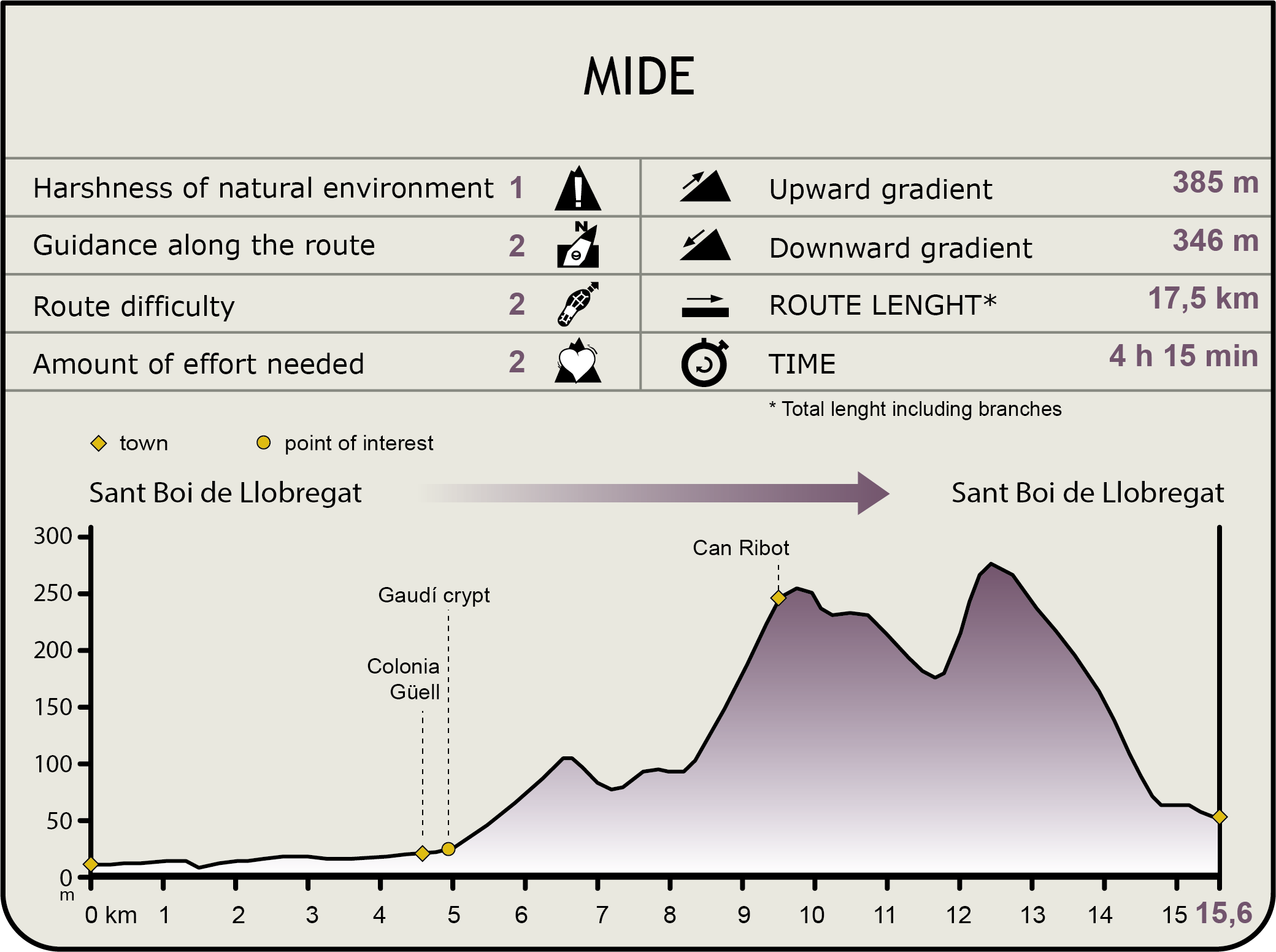
MIDE (Method for the Information of Excursions)
Featured
Further information
Colonial Güell
The Colonia Güell is a small workers’ neighbourhood which you pass through along this route. It is regarded as a reference when studying the architecture of Antoni Gaudí and is also one of the most important modernist ensembles and tourist attractions of Catalonia. The path passes in front of the Güell Crypt, a church designed by Gaudí which was left unfinished on the death of Eusebi Güell, his patron. It is worth taking a break from your route to admire it.
Santa Bárbara de Llorc Hermitage
The rock Hermitage of Santa Bárbara de Llorc, an original ensemble of chapels excavated in the earth during the late Middle Ages, can be found in the surrounding area.
